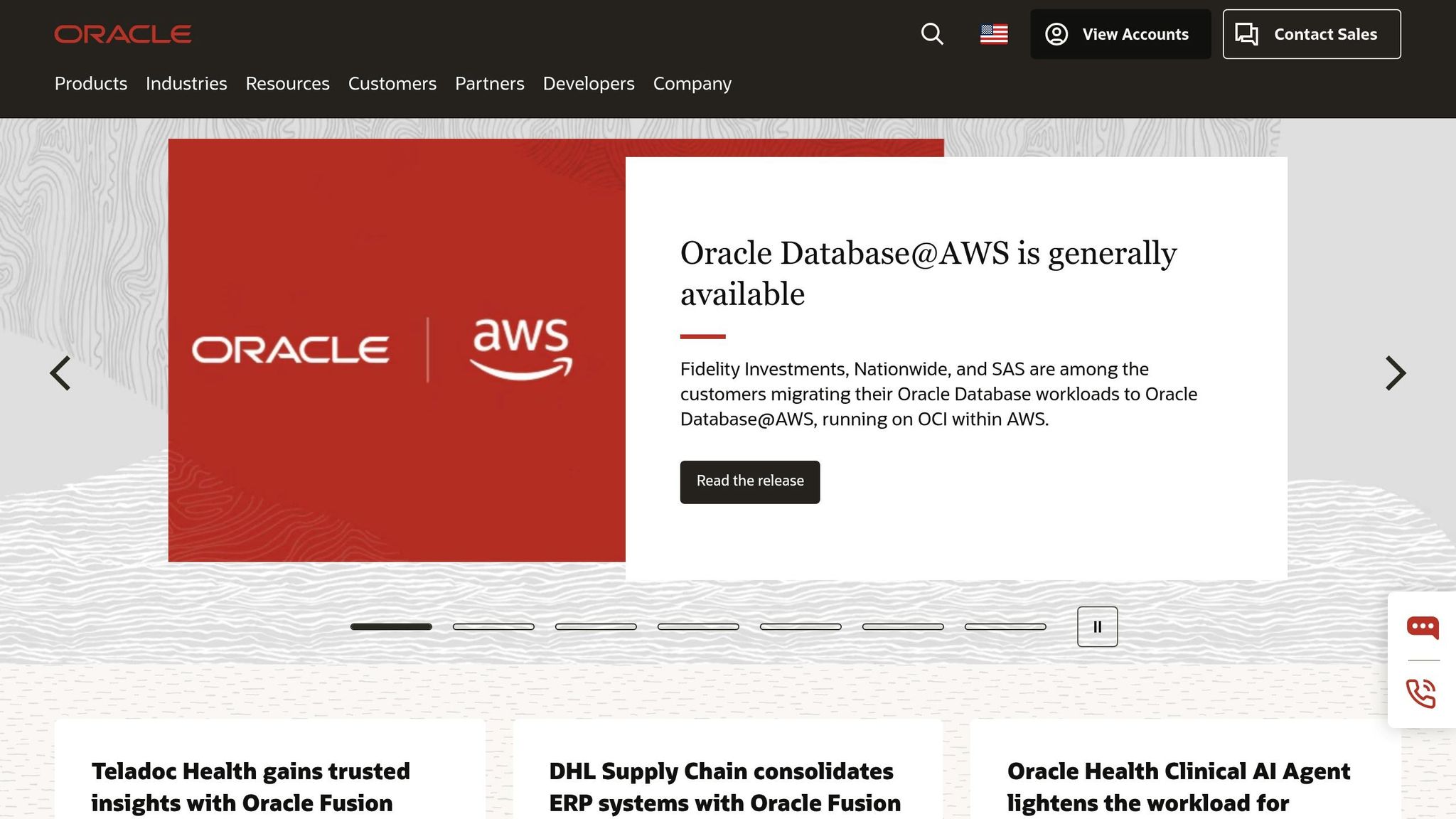Annual commit discounts can save startups money by offering lower rates in exchange for a year-long spending commitment. But they’re not always the right choice. Here’s the deal:
- When They Work: If your business has steady usage, predictable growth, and stable finances, these discounts can cut costs significantly. For example, cloud providers may offer up to 75% savings compared to on-demand pricing.
- When to Avoid: If you’re still figuring out your product-market fit, have tight cash flow, or expect rapid changes, long-term commitments can lock you into rigid agreements and hurt your flexibility.
Key Tips:
- Analyze 3–6 months of usage data to forecast needs.
- Compare savings to the risk of underutilization – committing to $50,000 but only using $35,000 wastes money.
- Negotiate terms to include flexible payment options and review clauses.
Annual commit discounts can be a great tool if aligned with your needs and financial health. But if they don’t fit your situation, it’s better to pass.
Oracle PAYG vs. Annual Commit (Annual Flex) | Which Cloud Billing Model Is Right for You?

When Annual Commit Discounts Make Sense
Annual commit discounts are a smart choice when your startup has steady, predictable needs and a solid financial footing. The key is knowing your ability to commit without exposing yourself to unnecessary risks.
Best Use Cases for Annual Commit Discounts
These discounts are especially helpful for startups with consistent usage patterns and clear growth plans. If you’ve been using a service for several months and can confidently predict your needs for the upcoming year, annual commits can become an effective way to cut costs.
For example, they’re ideal for essential services like cloud hosting, development tools, or customer support platforms – tools your team relies on daily. A clear roadmap and predictable resource requirements make these commitments worthwhile.
The savings from such discounts can be a lifeline for cash-strapped startups. With 38% of startups failing because they run out of cash [4], reducing operational expenses can extend your runway significantly. Cloud providers, for instance, often offer discounts of up to 75% compared to on-demand pricing [1]. For a growing startup, this could mean saving thousands of dollars annually.
These discounts are most effective when your startup is financially stable. If you’re maintaining healthy gross margins, have a predictable burn rate, and are seeing consistent monthly recurring revenue (MRR) growth of 10-15% or more [2], you’re in a strong position to make long-term commitments.
Another key indicator is customer acquisition stability. When your customer acquisition cost (CAC) to lifetime value (LTV) ratio hits at least 3:1 [2], it’s a sign that you have the predictability needed to accurately forecast your resource needs and consider annual commitments.
How to Calculate if a Discount is Worth It
Once you’ve identified a favorable scenario, it’s time to crunch the numbers to ensure the discount delivers real benefits.
Start by analyzing your historical usage data. Ideally, gather three to six months of usage patterns to establish a baseline and project your future needs.
Next, perform financial forecasting. Build expense models that include both fixed and variable costs, factoring in the software subscriptions you’re considering for annual commits [3]. Be sure to create multiple scenarios to account for different growth paths.
The basic calculation is straightforward: compare your current monthly costs to the annual commitment savings. But don’t overlook utilization risk – if you commit to $50,000 but only use $35,000 worth of services, the discount loses its value.
| Scenario | Monthly Cost | Annual Cost (No Discount) | Annual Commitment | Discount Rate | Actual Savings | Risk |
|---|---|---|---|---|---|---|
| Conservative Usage | $3,500 | $42,000 | $36,000 | 15% | $6,000 | Low |
| Expected Usage | $4,200 | $50,400 | $42,000 | 17% | $8,400 | Medium |
| Aggressive Growth | $5,800 | $69,600 | $50,000 | 20% | $19,600 | High |
To maximize value, regular reviews of your commitments are essential. As noted in the FinOps.org framework, you should periodically evaluate your commitment utilization with your team to ensure demand aligns with your forecasts [1]. This practice helps you spot and correct underutilization early, while also identifying opportunities for future savings.
"Commitment Discounts are financial instruments, allowing companies to monetize their knowledge of the future (forecast)." [1]
Finally, consider how these discounts align with your cash flow timing. Most annual commits require upfront payment or larger quarterly payments, which can strain your working capital. This is especially important if your runway is tight or you’re preparing for fundraising. Be sure to factor this into your financial planning.
Also, understand how your provider calculates savings. Some offer spend-based commitments, while others focus on resource-based agreements. Resource-specific deals often provide higher savings but come with a greater risk of underutilization [1]. Knowing these details ensures you’re making the most of the opportunity.
When to Avoid Annual Commit Discounts
While annual commit discounts can offer savings, they can also lock your startup into rigid agreements that limit flexibility and strain finances. Knowing when to pass on these deals is just as important as recognizing when they might work in your favor.
You should avoid annual commits if your startup is navigating uncertainty. If you’re still testing product-market fit, exploring different customer segments, or considering significant pivots, locking into long-term agreements can severely restrict your options. With 42% of startups failing because they create products without market demand [7], staying agile during the MVP phase is critical.
Financial instability is another major warning sign. If your cash runway is tight or you’re struggling to secure your next funding round, annual commitments can speed up financial trouble. It’s worth noting that 90% of startups fail within five years, with 38% citing cash shortages as a primary reason [5].
Main Risks of Annual Commit Discounts
Several risks highlight why annual commit discounts can hinder your startup’s ability to grow and adapt.
Lock-in limitations are a serious concern. When you commit to a vendor for a set period, you lose the flexibility to adapt to changing market conditions or pivot your business model. This is especially risky during the early stages when agility is essential. Startups that scale effectively after validating their MVP grow 20 times faster than those rushing untested products to market [6]. If an annual commitment prevents you from switching to better tools or services, it could stifle your progress.
Upfront cash flow strain is another issue. These discounts often require large upfront payments or periodic installments, which can drain your working capital. For startups with limited cash reserves, this can quickly create financial strain, especially if revenue falls short of expectations.
Overcommitment is a frequent pitfall. Startups often overestimate their future needs and commit to resources they don’t fully utilize. Since 74% of startup failures are linked to premature scaling driven by overambitious financial decisions [5], overcommitting can increase your burn rate without delivering proportional value.
Contract complexity and hidden costs can also pose challenges. Many annual agreements include auto-renewals, usage caps, or unexpected price hikes. Michael Singer from Vendr explains:
"Predictability is key for not letting SaaS contracts spiral out of control. If there is nothing in the contract that tells you what will happen to the pricing next year, or nothing that outlines growth you need to include this in." [8]
Additionally, the sunk cost mentality can trap you into using outdated solutions simply because you’ve already paid for them.
The financial risks are amplified when startups overestimate revenue and underestimate costs during scaling [5]. This optimism can lead to commitments that seem manageable initially but become burdensome over time.
Timing matters too. If you’re approaching a funding round, large annual commitments can weaken your cash position and make your burn rate appear riskier to investors. In fast-changing industries where new tools and services emerge frequently, long-term contracts can also prevent you from adopting better solutions as they become available.
sbb-itb-51b9a02
How to Evaluate and Negotiate Discounts
Making informed decisions about annual commit discounts is essential, especially when nearly 38% of startups fail because they run out of cash [4]. Aligning your financial choices with your growth strategy can help you avoid becoming part of that statistic.
Tools for Evaluating Discount Offers
To determine whether an annual commit discount is a good fit for your startup, you’ll need the right tools and methods. Start with a cost-benefit analysis (CBA) to weigh all direct costs – like upfront payments and setup fees – against indirect costs, such as integration, training, and opportunity costs. Then, compare these to the immediate and long-term benefits, including potential savings and productivity gains.
Use net present value (NPV) to calculate how future savings stack up against costs. A simple spreadsheet can help you track monthly cash flow, which is key for startups managing tight budgets. Include columns for upfront expenses, monthly savings, opportunity costs, and cumulative cash flow. This will help you identify when your savings surpass your costs and whether your cash runway can support the commitment.
A time-frame analysis is also critical. With the average IT project exceeding its budget by 27% [9], your projections need to account for potential overruns. Additionally, running a sensitivity analysis can help you test different scenarios, like “What happens if we only use 60% of our capacity?” or “What if our needs change in six months?”
For even more complex decisions, consider using Monte Carlo simulations to factor in uncertainties around costs and benefits [9]. These simulations can provide a clearer picture when multiple variables are in play.
How to Negotiate Better Terms
Once you’ve evaluated your options, the next step is to negotiate terms that protect your financial flexibility and prevent overcommitment. As Michael Singer from Vendr advises:
"Good negotiation doesn’t have to be confrontational" [10].
Start negotiations at least three weeks before implementation. Use your usage data to challenge the list price and ask for concessions on payment terms, onboarding, and exit options. Only bundle services if they align with your needs, and try to time your discussions to coincide with the vendor’s sales cycle.
Push back on the list price. Software often comes with profit margins of 70–80% [10], leaving plenty of room for negotiation – even for startups. Having detailed knowledge of your current and projected usage can give you leverage [10].
Leverage your brand. If your company’s name carries weight, you might offer to collaborate with the vendor’s marketing team – such as providing a case study or testimonial – in exchange for better pricing [10].
Think beyond just price. As Jen Challburg from Vendr points out:
"Even small items, if you can get them removed or negotiate on them, they add up" [10].
Negotiate for extended payment terms, like net 60 days or quarterly billing, to improve cash flow. If you’re considering a longer contract for bigger discounts, balance it with flexibility by including clauses that let you revisit terms if your usage changes.
Before entering negotiations, document your company’s must-haves. Clearly outline your technical requirements, integration needs, support expectations, and financial constraints. This will help ensure you stay focused and don’t get sidetracked by unnecessary features.
AlterSquare can simplify this entire process. Their platform offers templates for cost-benefit analysis, tracks your software commitments, and provides negotiation playbooks tailored to startups.
Conclusion: Making Smart Discount Decisions
Annual commit discounts can either fuel growth or strain resources – it all depends on your startup’s specific situation. The challenge lies in aligning these commitments with your financial health and business objectives. Up next, we’ll dive into how to balance these decisions with your cash flow and growth strategies.
It’s crucial to look beyond the discount rate and focus on the total cost of ownership. For instance, a 15% discount on a $50,000 annual commitment might sound appealing. But if your actual usage only justifies $30,000, you’re essentially overpaying by $12,500. Keep in mind that even when vendors claim their pricing is fixed, you often have room to negotiate.
Timing is just as important as the numbers. Companies that adopt strong multi-year contract strategies typically enjoy valuation multiples that are 15–20% higher than those relying primarily on annual agreements [11]. However, this advantage only holds if the commitments genuinely align with your business needs and don’t compromise your operational flexibility.
To make the most of these opportunities, refine your contract terms by identifying your non-negotiables. Successful startups treat these agreements as strategic investments when they meet validated needs and fit within a healthy cash flow framework. They evaluate multiple scenarios and negotiate beyond just price – addressing aspects like payment schedules, onboarding support, and exit options.
For startups looking for guidance, AlterSquare’s platform offers tools like cost-benefit analysis templates and negotiation playbooks tailored to these scenarios.
Ultimately, financial discipline is key. When annual commit discounts align with your needs and cash flow capacity, they can be a powerful tool. But if they don’t, walking away is often the smartest choice.
FAQs
How can startups accurately predict their needs to determine if an annual commit discount is worth it?
Startups can improve their predictions by diving into historical usage data, analyzing sales growth patterns, and keeping a close eye on customer behavior. These insights serve as a reliable starting point for gauging future demands.
To make your forecasts even sharper, leverage tools such as cost projection models or usage analytics platforms. It’s also a good idea to revisit your estimates regularly, adjusting for factors like growth, customer churn, or shifts in the market. This approach helps keep your decisions aligned with your business objectives.
How can startups negotiate better terms for annual commit discounts?
To get the best deals on annual commit discounts, prioritize adaptability and aligning with what matters most to both parties. One approach is to negotiate multi-year contracts that include opt-out clauses, which can help minimize long-term risks. If your budget allows, ask for extra discounts in exchange for upfront payments or larger commitment levels. Highlight your startup’s growth potential and industry insights during negotiations, using clear and measurable criteria to guide discussions. Lastly, consider offering strategic compromises that align with your goals to strike a deal that benefits everyone involved.
How can startups weigh the benefits of annual commit discounts against the risks of overcommitting?
Startups can find the right balance by carefully weighing their growth plans against their financial stability before jumping into annual discount commitments. Take a close look at whether the discount fits your projected needs and budget for the next year. If your business is still in its early stages or experiencing unpredictable growth, keeping your options open might be more valuable than the upfront savings.
To reduce potential risks, think about negotiating terms that offer some flexibility – like the ability to scale usage up or down or adding cancellation clauses. These provisions can help ensure you’re not stuck in a deal that could strain your cash flow or limit your ability to adapt as your business grows. Focus on agreements that align with both your immediate needs and your long-term growth plans.









Leave a Reply